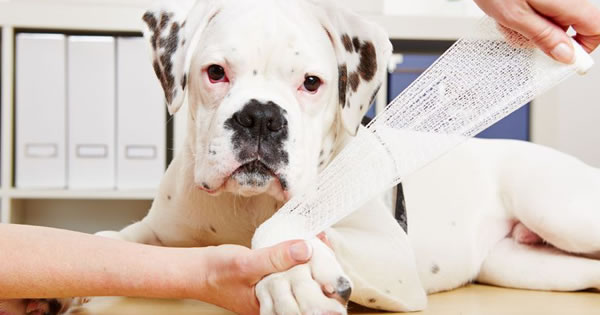Dogs are curious creatures by nature, and while this behavior can be quite endearing at times, it can be also be dangerous. This is especially true when your pet is chasing that bee in your garden. What do you do if your cherished friend gets stung? Just as with people, bee stings in dogs can be serious and may require medical attention.

Symptoms of Bee Stings on Dogs
You heard your dog yelp, but you cannot locate the source of its pain. Since bee stings on dogs can be hard to determine right away if they were not seen, you need to ask yourself a couple of questions. Was your pet exploring in a garden or area where there are bees commonly present? Is your dog particularly playful and/or curious?
If you answered yes to both of these questions, then it is highly possible that your dog was stung by a bee. Should you be concerned? While in some cases, bee stings on dogs may be mild problems, in many cases, they can be serious issues. As such, it is best to seek veterinary attention right away if you notice any of the following symptoms :
- Unexplained Crying/Yelping
- Running in Circles
- Excessive Salivation
- Sudden and Localized Swelling
- Incessant Scratching, Licking or Rubbing
- Profound Swelling of the Face, Neck and/or Throat
- Hives
- Vomiting
- Difficulty Breathing, Shock and/or Collapse
Typical Dog Bee Sting Treatment
If your dog is displaying symptoms of an allergic reaction to the bee sting, your veterinarian will likely administer an injection of Benadryl to calm the reaction. He or she may also send you home with some oral Benadryl to give to your dog for a few days following the sting.
While this is the most common dog bee sting treatment, if your pet experiences a severe reaction to the sting, your vet may administer an injection of Dexamethasone, which is a form of prednesone. This is an anti-inflammatory drug that should provide relief to your pet. In the case of shock, respiratory and cardiovascular support will be required.
Dog bee sting treatment for severe cases may also include IV fluid therapy, antibiotics and oxygen administration. If your dog cannot breathe and is in distress, a breathing tube may be placed in the throat. Finally, a 48-hour hospital stay is usually required for pets that are recovering from anaphylactic shock.
Preventing Bee Stings in Dogs
Since bees are so widespread during the spring and summer, it can be quite a big job preventing bee stings in dogs. However, there are some precautions you can take to reduce the chances of your pet getting stung. It is essential to note that you may need to hire a professional to handle some of these tasks:
- Check around your house and yard and remove any hives you are able to find.
- Keep your lawn cut as bees are attracted to such flowering weeds as dandelions.
- Put fences around any flower beds in your yard.
- Since some bees build their hives beneath the ground, do not allow your dog to dig in your yard.
- Ask your vet for some oral Benadryl to keep in an emergency kit at home.
- Keep your veterinarian’s phone number in a place where you can find it easily.
- Do not keep food outdoors as it can attract bees.
Dogs and Bee Stings Just as with humans, a bee sting in dogs can be serious in some cases. Unfortunately, due to their curious nature, dogs are often victims of stings. If your dog gets stung by a bee, remain calm and take your pet to the vet. Even if your pet does not develop any serious symptoms right away, it is always best to be safe.
Consider pet insurance through PetPremium with great optional preventive coverage to help you cover the costs of bee stings treatment for dogs. Go here for an overview of our Preventive Coverage.